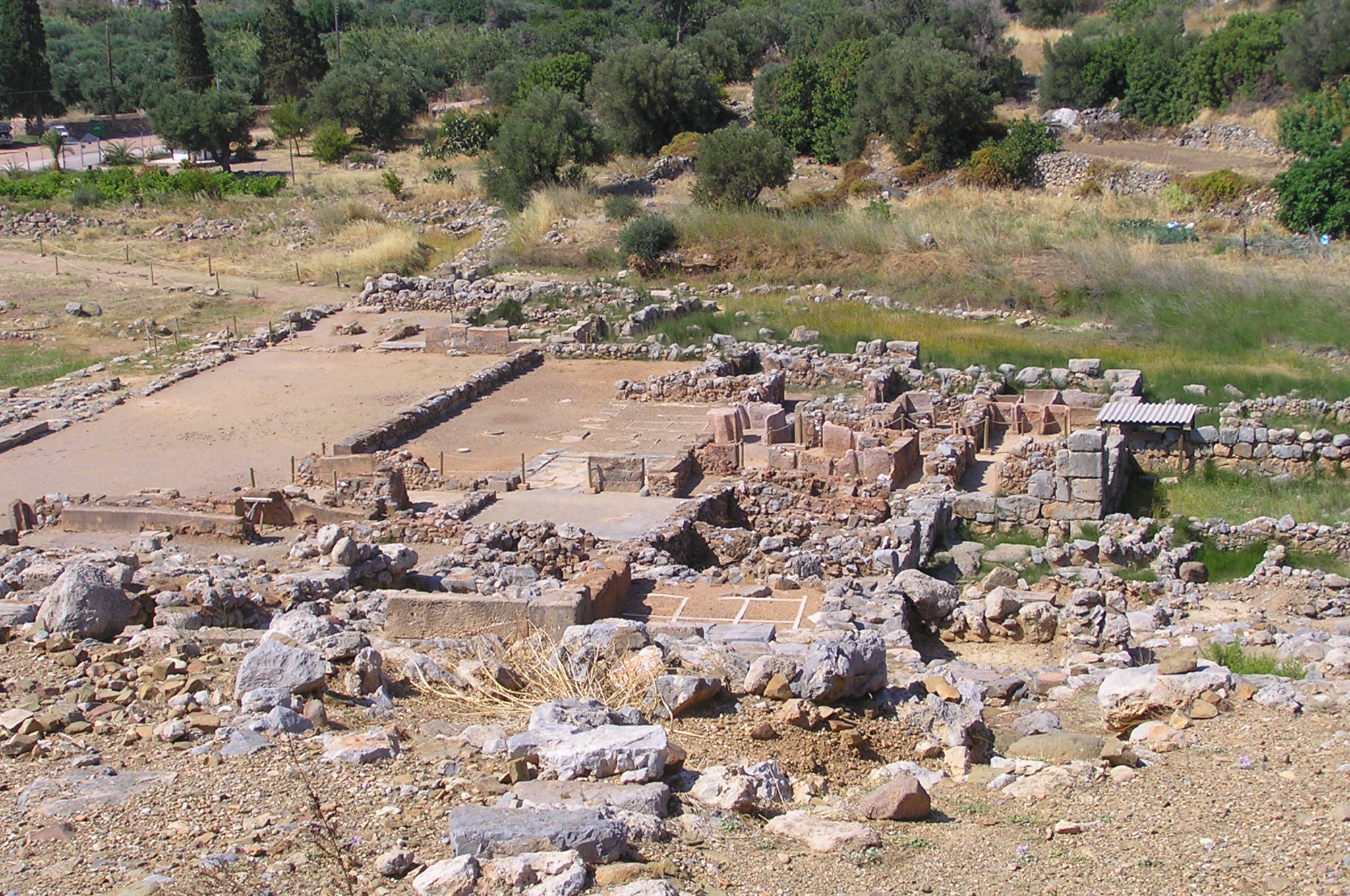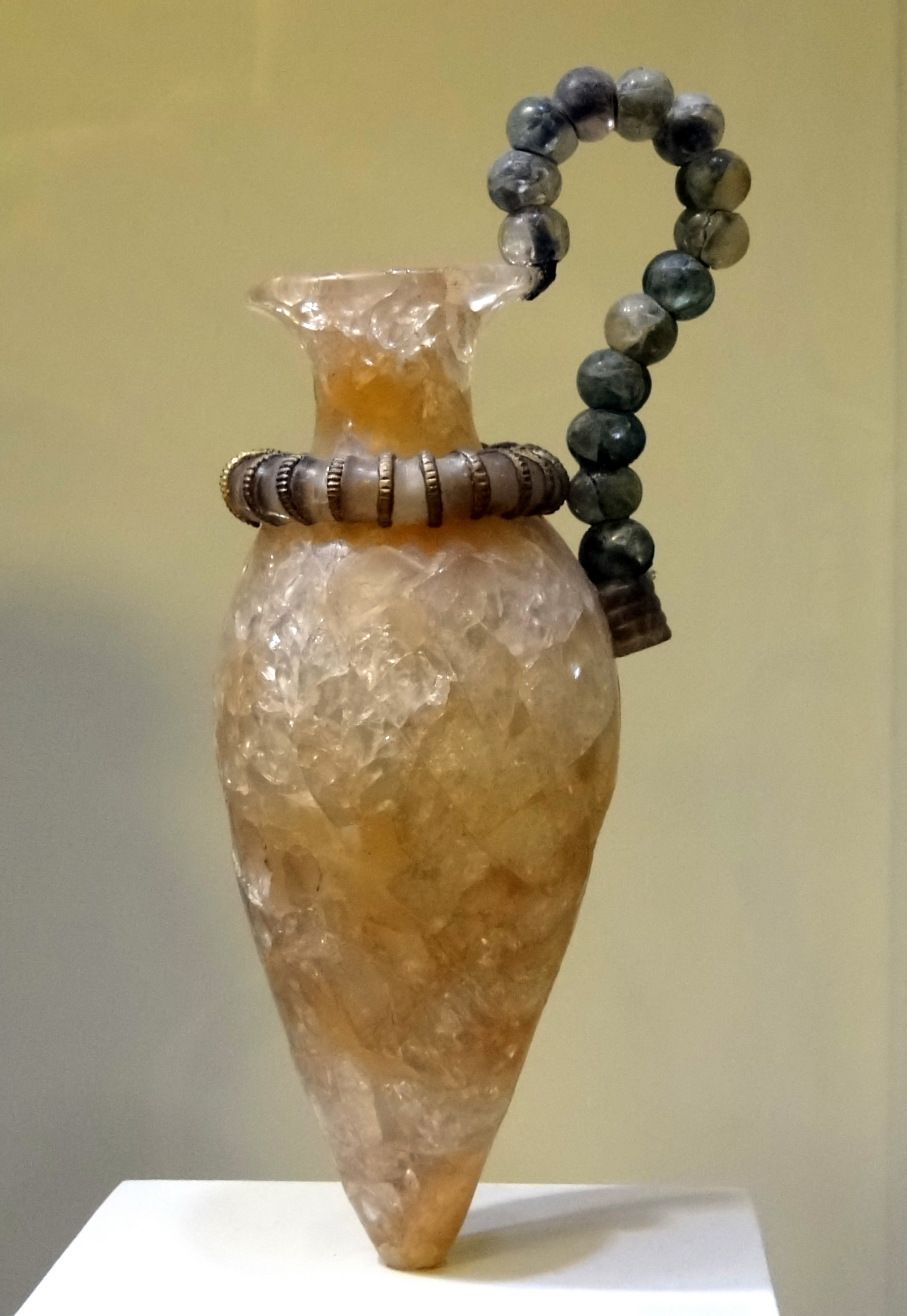Zakros on:
[Wikipedia]
[Google]
[Amazon]
Zakros ( el, Ζάκρος; Linear B: zakoro) is a site on the eastern coast of the 
 The
The
Minoan Crete, Zakros page
Minoan sites in Crete Populated places in ancient Crete Former populated places in Greece Populated places in Lasithi Aegean palaces of the Bronze Age {{AncientCrete-geo-stub
island
An island (or isle) is an isolated piece of habitat that is surrounded by a dramatically different habitat, such as water. Very small islands such as emergent land features on atolls can be called islets, skerries, cays or keys. An island ...
of Crete
Crete ( el, Κρήτη, translit=, Modern: , Ancient: ) is the largest and most populous of the Greek islands, the 88th largest island in the world and the fifth largest island in the Mediterranean Sea, after Sicily, Sardinia, Cyprus, ...
, Greece
Greece,, or , romanized: ', officially the Hellenic Republic, is a country in Southeast Europe. It is situated on the southern tip of the Balkans, and is located at the crossroads of Europe, Asia, and Africa. Greece shares land borders ...
, containing ruins from the Minoan civilization. The site is often known to archaeologists as Zakro or Kato Zakro. It is believed to have been one of the four main administrative centers of the Minoans, and its protected harbor
A harbor (American English), harbour (British English; see spelling differences), or haven is a sheltered body of water where ships, boats, and barges can be docked. The term ''harbor'' is often used interchangeably with ''port'', which is a ...
and strategic location made it an important commercial hub for trade to the east. Flinders Petrie
Sir William Matthew Flinders Petrie ( – ), commonly known as simply Flinders Petrie, was a British Egyptologist and a pioneer of systematic methodology in archaeology and the preservation of artefacts. He held the first chair of Egyp ...
related Zakro with Tjeker
The Tjeker or Tjekker ( Egyptian: ''ṯꜣkꜣr'' or ''ṯꜣkkꜣr'') were one of the Sea Peoples.
Known mainly from the " Story of Wenamun", the Tjeker are also documented earlier, at Medinet Habu, as raiders defeated by Pharaoh Ramesses III of ...
of the Sea Peoples
The Sea Peoples are a hypothesized seafaring confederation that attacked ancient Egypt and other regions in the East Mediterranean prior to and during the Late Bronze Age collapse (1200–900 BCE).. Quote: "First coined in 1881 by the Fren ...
.

 The
The town
A town is a human settlement. Towns are generally larger than villages and smaller than cities, though the criteria to distinguish between them vary considerably in different parts of the world.
Origin and use
The word "town" shares an ori ...
was dominated by the Palace of Zakro, originally built around 1900 BC, rebuilt around 1600 BC, and destroyed around 1450 BC along with the other major centers of Minoan civilization. Extensive ruins
Ruins () are the remains of a civilization's architecture. The term refers to formerly intact structures that have fallen into a state of partial or total disrepair over time due to a variety of factors, such as lack of maintenance, deliberate ...
of the palace remain, and are a popular tourist
Tourism is travel for pleasure or business; also the theory and practice of touring (disambiguation), touring, the business of attracting, accommodating, and entertaining tourists, and the business of operating tour (disambiguation), tours. Th ...
destination.
Geography
Zakros is sometimes divided into ''Epano Zakros'' (''Upper Zakros''), the portion higher up on the hillside, and ''Kato Zakros'' (''Lower Zakros''), the part near the sea. A ravine known as the "Ravine of the Dead" runs through both the upper and lower parts of the ancient site, named after the numerous burials that have been found in thecave
A cave or cavern is a natural void in the ground, specifically a space large enough for a human to enter. Caves often form by the weathering of rock and often extend deep underground. The word ''cave'' can refer to smaller openings such as sea ...
s along its walls.
Epano Zakros is from Sitia
Sitia ( el, Σητεία) is a port town and a municipality in Lasithi, Crete, Greece. The town has 9,912 inhabitants (2011) and the municipality has 18,318 (2011). It lies east of Agios Nikolaos and northeast of Ierapetra. Sitia port is on the ...
. The road passes through Palekastro
Palaikastro or Palekastro ( el, Παλαίκαστρο, officially el, Παλαίκαστρον), with the Godart and Olivier abbreviation PK, is a thriving town, geographic heir to a long line of settlements extending back into prehistoric ti ...
where it doubles back towards the south. A comparatively large village, Zakros includes in its community the following smaller villages: Kato Zakros, Adravasti, Azokeramos, Kellaria, Klisidi and the small hamlets of Ayios Georgios, Sfaka, Kanava and Skalia. The asphalt road ends at Kato Zakros.
Archaeology
Zakro was first excavated by D.G. Hogarth of theBritish School of Archaeology at Athens
, image = Image-Bsa athens library.jpg
, image_size = 300px
, image_upright=
, alt=
, caption = The library of the BSA
, latin_name=
, motto=
, founder = The Prince of Wales, later Edward VII, called the foundation meeti ...
and 12 houses were unearthed before the site was abandoned. In 1961, Nikolaos Platon
Nikolaos Platon (Greek , Anglicised ''Nicolas Platon''; – ) was a renowned Greek archaeologist. He discovered the Minoan palace of Zakros on Crete.
He put forward one of the two systems of relative Minoan chronology used by archaeologists f ...
resumed the excavation and discovered the Palace of Zakro. This site has yielded several clay tablet
In the Ancient Near East, clay tablets ( Akkadian ) were used as a writing medium, especially for writing in cuneiform, throughout the Bronze Age and well into the Iron Age.
Cuneiform characters were imprinted on a wet clay tablet with a sty ...
s with Linear A
Linear A is a writing system that was used by the Minoans of Crete from 1800 to 1450 BC to write the hypothesized Minoan language or languages. Linear A was the primary script used in palace and religious writings of the Minoan civi ...
inscriptions.Jan G. P. Best and Fred Woudhuizen, ''Lost Languages from the Mediterranean'', 1989, Brill Archive
References
Further reading
*External links
Minoan Crete, Zakros page
Minoan sites in Crete Populated places in ancient Crete Former populated places in Greece Populated places in Lasithi Aegean palaces of the Bronze Age {{AncientCrete-geo-stub